|
HOME: www.hiltonpond.org |
|||
THIS WEEK at HILTON POND (Back to Preceding Week; on to Next Week) |
•TROPICAL HUMMINGBIRD EXPEDITIONS• We're now enrolling for Costa Rica East & Guatemala (both Nov 2013). (Click on logo above for itineraries & trip details.)
|
2012 BIRD BANDING RESULTS: Because Hilton Pond Center is an outdoor locale subject to an almost infinite set of environmental or human-induced variables, every year is bound to be different--and 2012 was certainly no exception. Drought dropped the pond itself to its second lowest level since 1982, and it also was a year when the principal bander (Bill Hilton Jr.) was away from the Center more often than usual doing consulting work, traveling with family, or chasing Ruby-throated Hummingbirds on their wintering grounds in Costa Rica and Belize.
All text, maps, charts & photos © Hilton Pond Center The 11-acre property continues to go through vegetative succession such that Broomsedge fields, thickets, and Eastern Red Cedars dominant in the 1980s and early 1990s (see above) have been replaced for the most part by a young mixed forest of pines and hardwoods that support different kinds of wildlife. On top of all this the world around us is changing--perhaps faster than anyone realizes--as in the mid-1990s when a landowner clear-cut 70 acres of mature Loblolly Pines from an adjoining farm. We wouldn't be at all surprised to find diseases such as West Nile Virus also has taken a toll on local bird populations. Bootom Line: There's no doubt there are actually fewer birds around Hilton Pond than when we first moved here a little more than 30 years ago.
All text, maps, charts & photos © Hilton Pond Center On days when we ARE at the Center (plat above) we almost always run a few traps for songbirds (locations A, B & C) and really concentrate on hummingbirds coming to feeders at those locations late March through mid-October. When weather and time allow, we also deploy 6-8 mist nets just outside the old farmhouse and office (larger red box on map) where we can keep a close eye on them; we occasionally set additional nets elsewhere around the property (locations D-Z). We don't run nets when it's too hot or cold, when it's windy, or in the rain, so weather differences year-to-year have an impact on banding results. (Incidentally, we have run nets in winter at night to capture Northern Saw-whet Owls, but ever-larger Coyote clans that showed up several years ago make that an unwise procedure.) Alas, we do not keep track of net- or trap-hours--we long ago found that was much too complicated for the way we work--so we can't accurately compare banding effort from one year to the next. All text, maps, charts & photos © Hilton Pond Center (Click on chart above to view a more legible one in a new browser window.) There's no doubt we've run nets less often in recent years--for a varety of reasons including those mentioned above. Even so, we were disappointed in 2012 to band many fewer birds than ever before at Hilton Pond Center. During the 366-day period we ended up banding just 1,083 individuals (see chart above)--roughly half as many as last year and far below our 31-year average of 1,876.5 birds. Our first three banded birds of 2012 were all Yellow-rumped Warblers (above right)--historically our seventh-most-common banded species at the Center. However, after netting these YEWA on New Year's Day we captured only THREE more the remaining 365 days of the year, which pretty much reflects our general lack of success at banding during the just-completed 12-month period. All text, maps, charts & photos © Hilton Pond Center (Click on chart above to view a more legible one in a new browser window.) Yellow-rumped Warblers (AKA "Butterbutts") weren't the only member of the Center's "400 Club" (see chart above) to have a poor showing during the calendar year. Of 23 species depicted on the chart, only four--Carolina Chickadee, House Finch, Ruby-throated Hummingbird, and Swainson's Thrush--equaled or exceeded their long-term annual average during 2012. Furthermoe, several "400 Club" members were banded in unexpectedly low numbers--as with Purple Finch (2 banded), Dark-eyed Junco (1), Pine Siskin (1), Chipping Sparrow (5), White-throated Sparrow (20), Brown Thrasher (3), Eastern Towhee (2), and Carolina Wren (10)--while three others--Common Grackle, Blue Jay, and Ruby-crowned Kinglet--never even crossed the banding table! With these kinds of results--and especially when three of four "winter finches" (green bars on chart) comprising 48% of our cumulative totals almost fail to appear at all--our year-end results are bound to be very low. Of our 52 species banded during the year, 17 did manage to equal or exceed their 31-year average; these are listed in the summary chart at the end of this write-up. As a "reward" for their in-the-hand presence at Hilton Pond Center, we offer photos bekow of all those "above average" species from 2012.
All text, maps, charts & photos © Hilton Pond Center Folks often ask us about the most "unusual" or "exciting" or "interesting" bird we've captured around Hilton Pond; not wishing to think of nature in quite that way we always hesitate in answering. What we CAN say is that our "newest" bird in 2012 was a Barred Owl (above) we mist netted in broad daylight on 27 April. Although we've handled baby Barred Owls, we'd never worked with an adult BAOW until that April capture became our 126th banded species for the Center. We extracted the relatively passive owl from the net with no difficulty, banded and photographed and measured her (sexed by larger wing chord), and sent her on her way. Curiously, about two weeks later on 12 May we caught a SECOND daytime Barred Owl, but this one managed to dig a talon into the flesh of our hand, requiring antibiotics (for the bander--not the owl). Obviously, since our two banded Barred Owls were new for the Center, they also set a new high count for their species.
All text, maps, charts & photos © Hilton Pond Center Several months after the owls we encountered a very different kind of bird that wasn't new but that also established a record high for its kind, that being a Red-breasted Nuthatch (above). The winter of 2012-13 was predicted to be an "invasion" year for RBNU from the Canadian boreal forest and, sure enough, one showed up on 9 Oct. One nuthatch does not an invasion make, however, but on 4 November we netted four more to bring the year's total to a record-breaking five. (Our old one-year record of three was set in 2007.) Red-breasted Nuthatch is also one of our least common species; only 16 have been banded locally since our first one in 1985. We're happy to report at least two of these little invaders were still raiding the Center's sunflower seed feeders as of 31 December.
All text, maps, charts & photos © Hilton Pond Center Only slightly more common than Red-breasted Nuthatches around Hilton Pond are their congeners, White-breasted Nuthatches (dark-crowned male above). We see a few WBNU year-round but have banded only 20 since 1982. This year in October we caught two--a male and a female--which was above the species average of one. (We might note the most abundant local nuthatch is Brown-headed with 48 banded in 31 years, but we saw and caught none of them in 2012.)
All text, maps, charts & photos © Hilton Pond Center Before we forget about those two Barred Owls mentioned above, we should note that on the same day we caught the second one--in fact, on the very next net check--we also captured a second-year Red-shouldered Hawk (above). We were relieved this bird did NOT dig its talons into the bander's already-injured hand, but it did become the tenth of its species banded locally; it also exceeded our RSHA average of one per year. A Red-shouldered Hawk and the second Barred Owl--two uncommon raptors at Hilton Pond Center--were a great way to celebrate this year's International Migratory Bird Day on 12 May.
All text, maps, charts & photos © Hilton Pond Center Populations of several ground-nesting and -foraging birds have diminished noticeably through the years at the Center, possibly because shrubby areas they prefer are disappearing locally. (We especially miss those Eastern Towhees and Brown Thrashers.) Interestingly, however, we've seen an increase in numbers for several birds that require older vegetation with cavity trees in which they can nest. The nuthatches mentioned above fit this category, as does Carolina Chickadee (above)--whose 24 bandings this year surpassed the species' 31-year average of 15.
All text, maps, charts & photos © Hilton Pond Center Another cavity-nester with good numbers was Eastern Tufted Titmouse (above), for which we banded 18 individuals--surpassing the Center's average of 12. Titmice and chickadees work our sunflower seed feeders all day every day, taking one seed at a time and usually hiding it in a tree bark crevice where some other bird likely finds it in a matter of minutes.
All text, maps, charts & photos © Hilton Pond Center Woodpeckers are the most familiar cavity nesters--after all, they're the ones that excavate holes often used later by other species such as bluebirds--and at least one woodpecker is doing pretty well at the Center. In 2012 we banded 14 Downy Woodpeckers, well above the 31-year average of six and closing in on our all-time high of 18 set in 1994. That's a fledgling male in the photo above, with red on top of his head. In an adult male the red will be on the nape; adult females are completely black and white.
All text, maps, charts & photos © Hilton Pond Center All those Downy Woodpeckers were nice, but we were especially pleased to encounter one of the downy's bigger relatives: Hairy Woodpecker (adult male above). Since 1982 Hairy Woodpeckers have been very scarce at Hilton Pond Center, with only 25 banded. Thus, capturing even one this year put us over the average for the species. (NOTE: the two photos above provide a nice comparison of bill sizes in these two woodpeckers. In a Downy the bill is half the length of the head or less, while the Hairy's is more than half as long as the head. Downies also usually have black spots on outer tail feathers that are completely white in their larger relative.)
All text, maps, charts & photos © Hilton Pond Center Chickadee, titmouse, and woodpeckers--cavity nesters all. But we also banded one other bird that some folks are surprised to learn also lays its eggs in cavities: Belted Kingfisher. This species excavates its own nest in a stream bank or cliff, using its bill to dig and its feet to kick out loose earth. When water's up and fish are moving we often see kingfishers doing their thing in Hilton Pond. This year we caught just one--the double-belted female above that was only the tenth of her species banded since 1982.
All text, maps, charts & photos © Hilton Pond Center Through the years, House Finches (adult male above) have been our most commonly captured species at the Center, with 9,081 of them getting snared in nets or traps since 1982. This western species expanded its range tremendously after being introduced on Long Island NY in 1940-41 and now nests all across the eastern U.S. We suspect during our early years at Hilton Pond (the 1980s) most HOFI we handled were migrants--as indicated by seven of them showing up far to our northeast after banding. These days House Finches breed locally in big numbers and each July our sunflower seed traps fill up with recent fledglings. In 2012 we didn't catch a ton of HOFI--"just" 396--and although that was above their 31-year average of 293 it was barely half the record-setting 715 we banded in 1992.
All text, maps, charts & photos © Hilton Pond Center Of the remaining Hilton Pond species banded at "above average" levels in 2012, all can be classified as Neotropical migrants that breed in North America and spend colder months south of the U.S. border. However, even though some populations of Cedar Waxwings (above) seem to follow that seasonal strategy, waxwings in the Carolina Piedmont are likely winter residents from up north that show up most autumns and roam the countryside in loose flocks. This year we only caught 11 of these black-masked berry-eaters, but that was still above their annual average of eight.
All text, maps, charts & photos © Hilton Pond Center Even more colorful than waxwings is the male Rose-breasted Grosbeak (above), which without question is a Neotropical migrant. This species passes through Hilton Pond Center each spring and fall but to our knowledge does not breed in South Carolina. Three we captured this year were above the annual average of two; since 1982 we've banded only 48 locally.
All text, maps, charts & photos © Hilton Pond Center Encountered much more frequently is our nets is another Neotrop identifiable by its blue back, black face and bib, and big white wing patch: Black-throated Blue Warbler (male above). This is another species whose status at higher elevations in South Carolina is not well-known; it very well may breed on Sassafras Mountain or Caesar's Head, but it's present at the Center only in migration. In 2012 we netted seven of these birds, just above the average of six.
All text, maps, charts & photos © Hilton Pond Center After including an image of a male Black-throated Blue Warbler, we'd be remiss in not showing how different his mate looks. In this species the female (above) is so unlike the male that early ornithologists though the two sexes were actually two species. Of the 176 Black-throated Blue Warblers we've netted at Hilton Pond somewhat more have been females, although it's interesting that we've caught exactly as many (88) of the species in spring as in fall.
All text, maps, charts & photos © Hilton Pond Center Both eastern tanager species occur around Hilton Pond during migration, but this year we caught only Scarlet Tanagers (immature male, above, with yellow-green body and jet-black wings). This seems odd because Summer Tanagers actually breed here. Our four banded Scarlet Tanagers in 2012 slightly exceeded the 31-year average of three.
All text, maps, charts & photos © Hilton Pond Center Two more Neotropical migrants that pass through the Carolina Piedmont and hit our nets are superficially similar in appearance but are actually quite easy to tell apart. Both are spot-breasted thrushes (Turdidae). Above is the Gray-cheeked Thrush whose face lacks an eye ring or any degree of buffiness. We banded nine of these at Hilton Pond in 2012 (the average is four) and, unfortunately, could not determine that any of them actually were the smaller and much-less-common Bicknell's Thrush.
All text, maps, charts & photos © Hilton Pond Center Swainson's Thrush occurs at the Center much more frequently than other turdids--except American Robins, of course--with 510 banded since 1982. Of those, we captured 22 in 2012, above the Center's long-term average of 16. This spot-breasted species has a very buffy face and noticeable eye ring; 90% of our captures have been in autumn migration--almost exactly the same as for Gray-cheeked Thrush (91%).
All text, maps, charts & photos © Hilton Pond Center Our final "above average" species for 2012 is also a Neotropical migrant and is the one to which we devote quite a bit of time here at Hilton Pond Center AND on its wintering grounds in Central America. We refer, of course to Ruby-throated Hummingbirds (adult male above)--our fourth-most-commonly captured birds at the Center (4,682 banded). (Click on chart above to view a more legible one in a new browser window.) All text, maps, charts & photos © Hilton Pond Center We had a minor "disappointment" in 2012 in that we didn't achieve the 200 mark for ruby-throats at the Center for the second year in a row--we banded 197 in 2011 and in 2012 (see chart above)--but we still easily exceeded the long-term average of 161. (It should be noted we did not begin handling RTHU until 1984, two years after commencement of the Center's bird banding program.)
All text, maps, charts & photos © Hilton Pond Center Our first Ruby-throated Hummingbird of 2012 was an adult male on 27 March, which tied the Center's early spring date set in 1991. The first adult female--above, with the temporary green color mark we apply to all RTHU banded at Hilton Pond--wasn't caught until 19 May, although some were present prior to then. The first banding of an immature occurred on 7 July--about a month later than our earliest record for a recent fledgling. Our final RTHU banding of the year came 8 October, ten days before our all-time late date from 1986. (These dates explain why we recommend folks at our latitude hang a feeder not later than St. Patrick's Day, and not to take the last one down until Halloween. Actually, though, we advise keeping one feeder fresh year-round in order to attract those vagrant western hummingbirds that occasionally appear after ruby-throats depart.)
All text, maps, charts & photos © Hilton Pond Center Although bird banding is certainly fun, we do it not for enjoyment but to help provide a quantifiable census of bird life in the Carolina Piedmont. We believe our work at Hilton Pond as the longest-running year-round banding station in the Carolinas provides useful and important information about southeastern avifauna. Banding also allows us to use birds-in-the-hand as a hook to excite folks of all ages about birding and nature in general. Keeping track of how many birds we band year-to-year certainly tell us something, but the extended scientific value comes AFTER the bird is released back into the wild--as with that Barred Owl (above) winging its way toward our pond right after being banded. It is then we learn otherwise unknowable info about birds such as longevity, site fidelity, and migration specifics. Indeed, in 2012 at Hilton Pond Center we had numerous significant returns (migrants) and local recaptures (year-round residents), some of which are listed below with their original capture date and subsequent age at recapture. ••RETURNS & LOCAL RECAPTURES•• American Goldfinch Carolina Chickadee Northern Cardinal White-throated Sparrow House Finch Eastern Tufted Titmouse Eastern Bluebird Downy Woodpecker Carolina Wren Ruby-throated Hummingbird All text, maps, charts & photos © Hilton Pond Center All these birds are significant but we highlight those in at least their sixth year in red. We are especially impressed by those two female Ruby-throated Hummingbirds banded in 2006, one as an adult and one immature. We've caught both these birds every year since, meaning they've departed Hilton Pond each autumn, flown perhaps 1,500 miles to wintering grounds in the Neotropics, and returned each spring to our little 11-acre preserve--sometimes to be caught in the very same trap. Site fidelity and longevity indeed! ••FOREIGN ENCOUNTERS•• Such returns as those listed above are fun and make worthwhile the long hours spent banding, but the ultimate satisfaction occurs when a bird banded at Hilton Pond Center shows up elsewhere. That hasn't happened very often--only 59 of our 58,171 banded birds have been encountered outside York County, that small percentage in part the result of having so few banders in the Carolinas. This year we were fortunate to hear from the federal Bird Banding Laboratory about two "foreign encounters" reported to them.
All text, maps, charts & photos © Hilton Pond Center One was a female American Goldfinch (above) banded 10 January 2009 and found dead of West Nile Virus (diagnosed by laboratory necropsy) on 23 August 2012 near Lyndonville NY--596 straight-line miles from Hilton Pond. This was our third AMGO to be found on the south shore of Lake Ontario and our sixth foreign encounter for the species.
All text, maps, charts & photos © Hilton Pond Center We also got word of a Purple Finch (adult male above) banded at the Center on 25 January 2011 and found dead the same year on 22 May at Kouchibouguac, New Brunswick--1,197 miles to the northeast. In all, 17 of our Purple Finches have shown up elsewhere. All end-of-year contributions are tax-deductible on your
All text, maps, charts & photos © Hilton Pond Center
All text, maps, charts & photos © Hilton Pond Center POSTSCRIPT: At Hilton Pond Center we don't just band birds but also spend a considerable amount of time watching them at feeders, in the woods, on the pond, or in skies overhead. We've always kept a "Yard List" of birds seen on or above the property and since 1982 have tallied 171 species--a fairly respectable list for the Carolina Piedmont that lacks coastal or montane habitats. A while back we also started keeping a "Year List" of all birds observed at the Center from January through December. In 2012 we spotted 86 species--50.3% of the comprehensive list. Our best year since we started this practice was 2008 when 96 species (56.5%) were seen at least once. Our "best bird" of 2012 was probably the increasingly uncommon Red-headed Woodpecker (like the one above from an earlier encounter)--seen high atop a White Oak tree near the pond on 28 September. This was only our third sighting at the Center since 1982. All text, maps, charts & photos © Hilton Pond Center All end-of-year contributions are tax-deductible on your |
|---|
|
"This Week at Hilton Pond" is written and photographed by Bill Hilton Jr., executive director of Hilton Pond Center for Piedmont Natural History
|
|
|
Please refer "This Week at Hilton Pond" to others by clicking on this button: |
Comments or questions about this week's installment? Send an E-mail to INFO. (Be sure to scroll down for a tally of birds banded/recaptured during the period, plus other nature notes.) |

Click on image at right for live Web cam of Hilton Pond,
plus daily weather summary
Transmission of weather data from Hilton Pond Center via WeatherSnoop for Mac.
|
--SEARCH OUR SITE-- For a free on-line subscription to "This Week at Hilton Pond," send us an |
|
Thanks to the following fine folks for recent gifts in support of Hilton Pond Center for Piedmont Natural History and/or Operation RubyThroat: The Hummingbird Project. Your tax-deductible contributions allow us to continue writing, photographing, and sharing "This Week at Hilton Pond" with students, teachers, and the general public. Please see Support or scroll below if you'd like to make an end-of-year tax-deductible gift of your own.
|
If you enjoy "This Week at Hilton Pond," please help support Hilton Pond Center for Piedmont Natural History. It's painless, and YOU can make a difference! (Just CLICK on a logo below or send a check if you like; see Support for address.) |
|
Make credit card donations on-line via Network for Good: |
|
Use your PayPal account to make direct donations: |
|
If you like shopping on-line please become a member of iGive, through which 950+ on-line stores from Amazon to Lands' End and even iTunes donate a percentage of your purchase price to support Hilton Pond Center.  Every new member who registers with iGive and makes a purchase through them earns an ADDITIONAL $5 for the Center. You can even do Web searches through iGive and earn a penny per search--sometimes TWO--for the cause! Please enroll by going to the iGive Web site. It's a painless, important way for YOU to support our on-going work in conservation, education, and research. Add the iGive Toolbar to your browser and register Operation RubyThroat as your preferred charity to make it even easier to help Hilton Pond Center when you shop. Every new member who registers with iGive and makes a purchase through them earns an ADDITIONAL $5 for the Center. You can even do Web searches through iGive and earn a penny per search--sometimes TWO--for the cause! Please enroll by going to the iGive Web site. It's a painless, important way for YOU to support our on-going work in conservation, education, and research. Add the iGive Toolbar to your browser and register Operation RubyThroat as your preferred charity to make it even easier to help Hilton Pond Center when you shop. |
|
BIRDS BANDED THIS WEEK at HILTON POND CENTER 29-31 December 2012 |
|
|
SPECIES BANDED THIS WEEK: * = New species for 2012 WEEKLY BANDING TOTAL: 4 species 31 individuals 2012 BANDING TOTAL: 31-YEAR BANDING GRAND TOTAL: (since 28 June 1982, during which time 171 species have been observed on or over the property) 126 species (31-yr avg = 67.3) 58,171 individuals (31-yr avg = 1,876.5) NOTABLE RECAPTURES THIS WEEK:
|
OTHER NATURE NOTES: --If you're keeping track of the on-going drought at Hilton Pond, we're pleased to say we got 0.29" of rain on 28 Dec, bringing the monthly total to an above-average 4.68". For 2012, however, we received only 41.32"--significantly below the annual average of 48.32". We're ever-hopeful extended mid-winter rainfall will bring pond levels back up so we can start the warm season with a full impoundment. --Last week's photo essay from Hilton Pond was a report on what we saw on the 22nd Annual York/Rock Hill Christmas Bird Count. It's available as Installment #559. All text & photos © Hilton Pond Center |


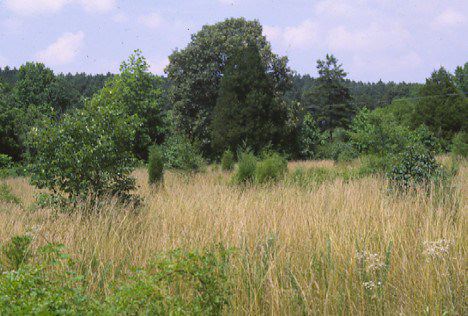
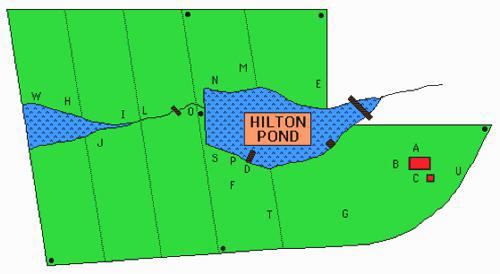
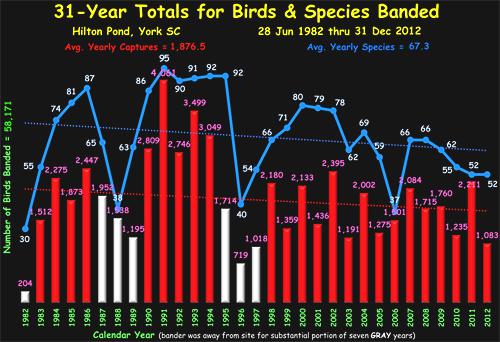
 We handled 52 different species in 2012--same as last year--but again well under our long-term average of 67.3.
We handled 52 different species in 2012--same as last year--but again well under our long-term average of 67.3.
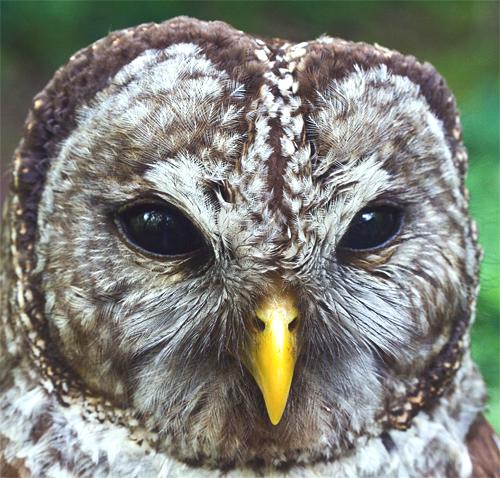
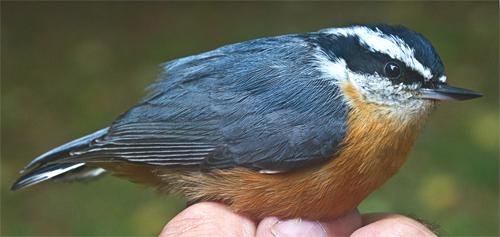

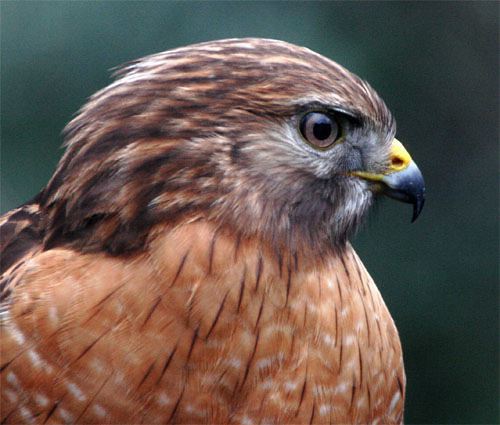
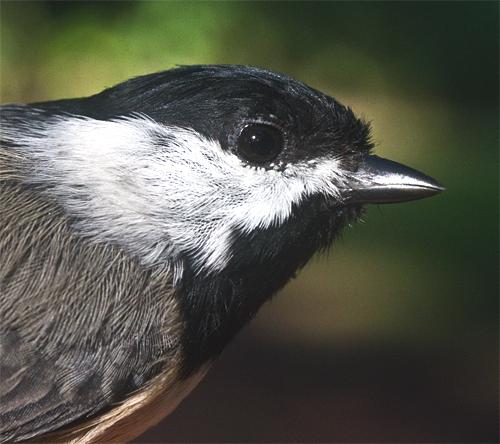

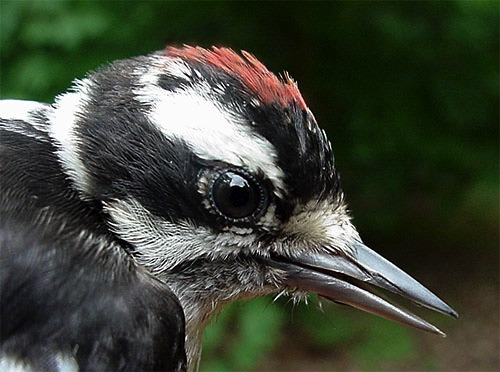
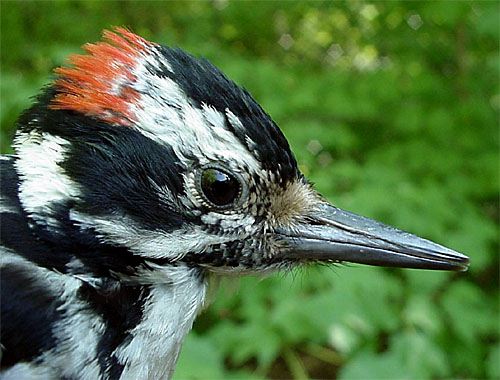
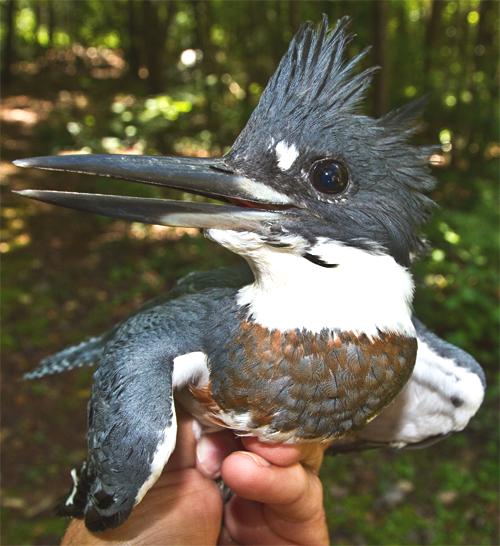
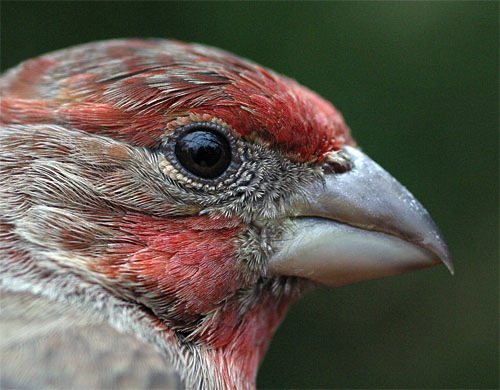
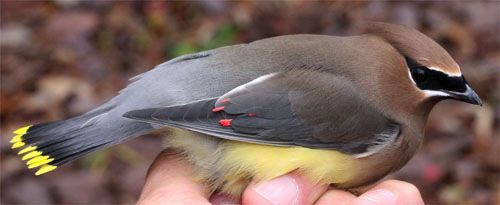

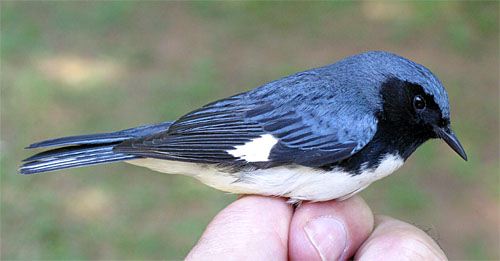
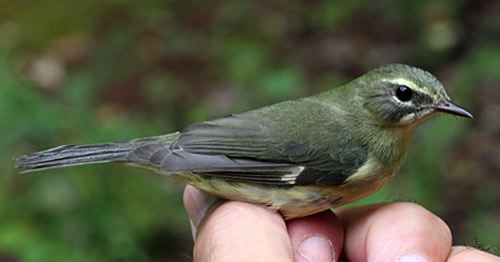
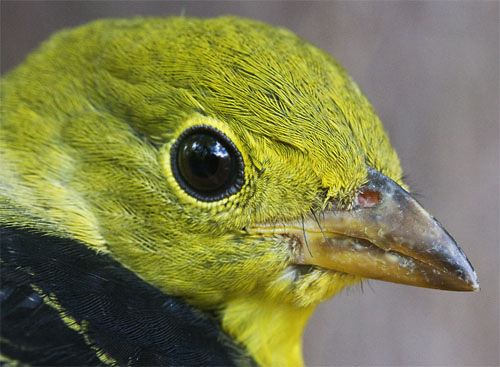
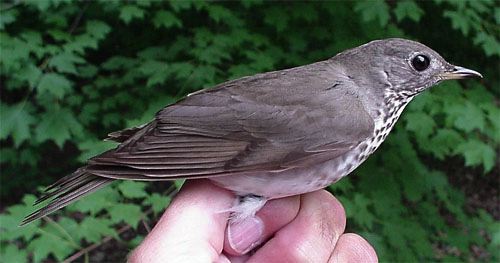
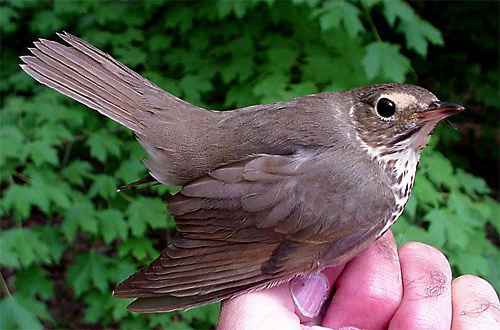
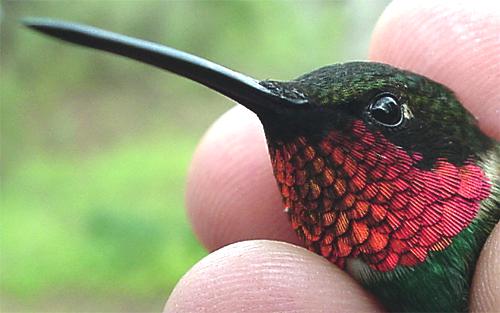
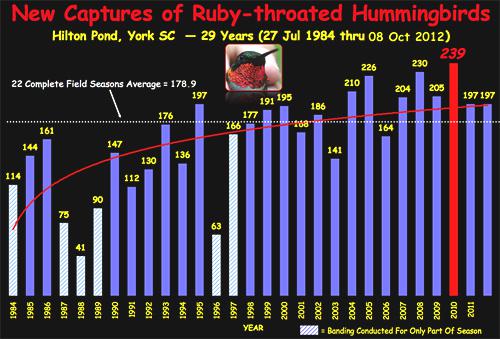
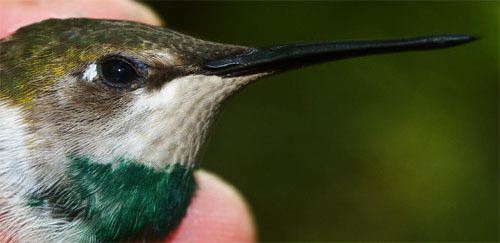
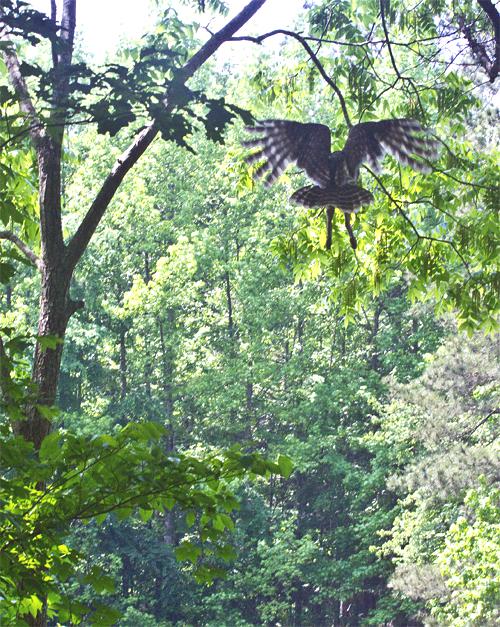
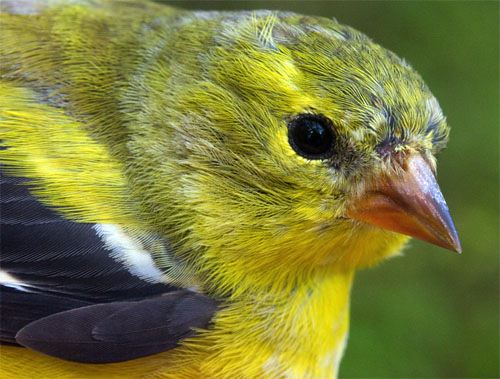







 Oct 15 to Mar 15:
Oct 15 to Mar 15: